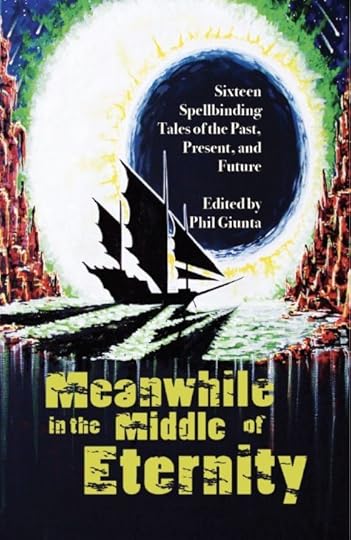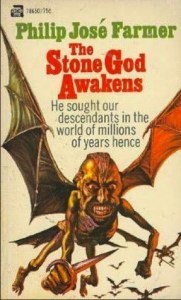Phil Giunta's Blog, page 17
April 21, 2021
Your Story is Perfect! Don’t Change a Thing. Well, Except For….
Details
Your Story is Perfect! Don’t Change a Thing. Well, Except For….
You finished your story. You’re proud of it and should be, but now, it’s time for other eyes to judge your work. Before you fire it off to your agent, publisher, editor, open call, or even your critique group, you should take the time to review and polish your story. Always submit your best work! In this presentation, we’ll cover several easy ways to trim and tighten your prose. This will be especially helpful for short stories that must adhere to a word limit.
April 9, 2021
About This Writing Stuff…
This week, Ken Miyamoto discusses five categories of SF and Fantasy worldbuilding while Anne R. Allen lists several reader pet peeves that writers should avoid.
Kris Calvin and Philip Athans provide their points of view on writing multiple points of view, Brian Andrews concludes his lesson on crafting believable action scenes, and Penny Sansevieri offers strategies for book marketing and author branding.
All that and a little more. Enjoy!
The Craft and Rules of Worldbuilding in Science Fiction and Fantasy by Ken Miyamoto
Three Things Your Query Letter Needs to Stand Out by Lucinda Halpern via Anne R. Allen
How to Avoid Writing Stuff Readers Hate by Anne R. Allen
30+ Ideas for Bite-Sized Book Marketing by Penny Sansevieri
Writing from Multiple Points of View by Kris Calvin
Whose POV Should it Be? by Philip Athans
How to Write Amazing Action Scenes (Part 2 of 2) by Brian Andrews
5 Great Tips: A Beginner’s Guide to Author Branding by Penny Sansevieri
Make Your Protagonist an Actor by Kathryn Craft
7 Awesome Foreshadowing Tips for Fiction Writers by Mia Botha
April 7, 2021
A Giveaway in the Middle of Eternity!
If you’re a member of LibraryThing, and signed up for their Member Giveaways program, we’re running a giveaway for five (5) paperback copies of our new anthology, Meanwhile in the Middle of Eternity, now through Wed. April 28!
Winners will be randomly selected by LibraryThing.
In eternity, all stories are timeless.
Join gods and mortals in combat against slithering demons in famine-stricken Finland… Witness an unconventional battle of wits as a devious genie tries to outfox a clever robot… Ride with two hapless deliverymen as they stumble upon a frightening ritual to propitiate an ancient and malevolent power… Escape to a remote corner of the globe with a desperate family fleeing an insidious alien invasion… Follow a fraternity pledge as he undergoes an initiation to terror at a local cemetery… and much more!
Travel through time and across the cosmos with storytellers Daniel Patrick Corcoran, Michael Critzer, Sean Druelinger, Julie Feedon, Phil Giunta, Christopher Ochs, Peter Ong, Bart Palamaro, Susanna Reilly, Stuart S. Roth, April Welles, Lance Woods, and Steven H. Wilson.

March 6, 2021
About This Writing Stuff…
The past several weeks have been hectic, leaving me little time for blogging. Unfortunately, I’ve also been contending with depression, burnout, and fatigue for reasons too long to elucidate here (and you probably don’t care anyway). Winter and ongoing pandemic stress have exacerbated the problem. Whatever. I’m working through it.
On a lighter note, I’m thrilled to announce that four of my short stories will be published across two anthologies in late March. More information on that soon! For now, I lined up another fantastic selection of helpful articles about writing and publishing.
Monica Valentinelli discusses the ingredients of dark science fiction and offers a generous helping of positive writing advice to keep us motivated.
Ken Miyamoto explains the difference between story and plot while Susan DeFreitas delves into strategies for presenting backstory.
Over at Mythcreants, Oren Ashkenazi warns prose writers against emulating TV and film while Chris Winkle teaches us how to improve reader engagement.
Brian Andrews guides us through writing believable action scenes, Julie Duffy provides pointers on transitioning between novels and short stories, and Philip Athens summarizes the history of pulp magazines.
All that a little more. Enjoy!
When Science Fiction Meets Horror in World-Building by Monica Valentinelli
101 Softly-Delivered Writing Lessons by Monica Valentinelli
What the 2021 Facebook Changes Mean for Authors by Thomas Umstattd, Jr.
Plot vs. Story: What’s the Difference? by Ken Miyamoto
Backstory and Exposition: 4 Key Tactics by Susan DeFreitas via Jane Friedman
Focus on Short Fiction by Julie Duffy
Five Bad Habits Writers Learn from Movies and TV by Oren Ashkenazi
Optimizing Your Story Ideas for Better Engagement by Chris Winkle
How to Write Amazing Action Scenes by Brian Andrews
How to Write A Bestselling Thriller by Hank Phillippi Ryan
Doublespeak: A Look at Voice by Terry Odell
A Brief History of Pulp Fiction by Philip Athans
February 7, 2021
Book Review: The Stone God Awakens by Philip Jose Farmer
Encased in stone for millions of years as a result of a failed experiment, atomic scientist Ulysses Singing Bear is liberated from his imprisonment by a bolt of lightning during a battle between two races of bipedal creatures. One group appears to have evolved from cats while the other, raccoons. Ulysses soon learns that humans have long since become extinct and the earth populated by sentient beings evolved from familiar animals of the late 20th century.
 As Ulysses acclimates to his new environment, the Wufea come to worship him as a god and ask for his help in defeating the Great Devourer known as Wurutana. To uphold his status as a deity, Ulysses has little choice but to agree and, along with an army of Wufea warriors, treks across the wilderness to do battle with what he understands to be an enormous tree that is spreading across the land. Along the way, he manages to form a truce between the Wufea and their enemy, the Wagarondit. He even recruits Wagarondit warriors to join the offensive.
As Ulysses acclimates to his new environment, the Wufea come to worship him as a god and ask for his help in defeating the Great Devourer known as Wurutana. To uphold his status as a deity, Ulysses has little choice but to agree and, along with an army of Wufea warriors, treks across the wilderness to do battle with what he understands to be an enormous tree that is spreading across the land. Along the way, he manages to form a truce between the Wufea and their enemy, the Wagarondit. He even recruits Wagarondit warriors to join the offensive.
All the while, they are guided by Ghlikh, a pygmy creature with batwings who offers Ulysses information about the land and peoples ahead of them, including a village of humans who live along the southern coast. In order to reach them, however, Ulysses and his armies must cross Wurutana. Yet, Ulysses senses that Ghlikh is withholding information and possibly leading them into a trap.
Will Ulysses and his troops survive their passage through Wurutana and their encounters with the treacherous denizens within its vast network of tangled branches, vines, trunks, and waterways?
At its core, The Stone God Awakens is a fish out of water adventure much like Farmer’s The Green Odyssey published 13 years earlier, or Jack Vance’s Planet of Adventure series, or even The Time Machine by H.G. Welles. In this case, Farmer adds a few imaginative twists including the evolution of various animal species, an uncommon antagonist, and the development of plant-based science and engineering. The fact that an atomic scientist displays such exceptional prowess in survival, military tactics, and political leadership is, at times, a stretch. Still, The Stone God Awakens is another outstanding tale from one of the giants of the genre.
February 2, 2021
My (Virtual) Farpoint Schedule
If you are planning to attend Farpoint SF Convention (via Gather.Town) on February 20-21, here is my panel schedule. The full con schedule and instructions for using Gather.Town will be posted on their website soon.
Hope to see you there!
Firebringer Press Presents
Sat 2/20
11:00AM
Got Enough Science?
Sat 2/20
1:00PM
This Was Not The Dystopia I Ordered
Sun 2/21
NOON
January 28, 2021
About This Writing Stuff…
This week, learn how to deal with writer burnout from Tom Meitner, and let attorney Joseph Perry explain the critical components of a publishing contract.
At Career Authors, Erin Celello urges us to take our story idea on a date while Hank Phillippi Ryan offers advice on self-editing.
Kelly Jensen reminds us of the value of mood to both writer and reader while over at the The Write Practice, Joslyn Chase and Ruthanne Reid discuss the proper use of cause and effect and the elements of plot, respectively.
Janice Hardy give us some strong opening lines and Anthony Ehlers shows us how to be visual storytellers.
All that and a little more. Enjoy!
Stretched to Your Limits? How to Avoid—and Cure—Writing Burnout by Tom Meitner
Know Your Rights: Key Provisions in a Publishing Contract by Joseph Perry via Anne R. Allen
How to Cut 20,000 Words by Hank Phillippi Ryan
4 Questions to Ask Before You Start Writing that Book by Erin Celello
How Much Really Needs to Be in Your Novel’s Opening Sentence by Janice Hardy
5 Tips on How to Fit Your Book’s Hook into a Super Short Amazon Ad by Bryan Cohen
10 Powerful Visual Storytelling Techniques for Writers by Anthony Ehlers
How to Maximize the Power of Cause and Effect in Your Stories by Joslyn Chase
What is Plot? The 6 Elements of Plot and How to Use Them by Ruthanne Reid
Mood is the Most Underrated Literary Device—and the Most Valuable by Kelly Jensen
Wattpad to Be Acquired for $600 Million by Korean Internet Conglomerate Naver by Todd Spangler for Variety
Class Action Suit: Amazon and Publishers Face Price Collusion by Personanondata
January 17, 2021
Book Review: Victory by Lester del Rey
After 14 years in space defending the planet Meloa from an incursion by the Throm, Captain Duke O’Neill returns to find Kordule, the capital of Meloa, devastated after a series of Throm raids that occurred over the past few months.
To make matters worse, Earth remained neutral and refused to intervene on behalf Meloa. For this, O’Neill holds a bitter grudge against his home planet and refuses to return. Rather, he decides to remain on Meloa. He first tracks down his wife, Ronda, who survived the raids, but is living in squalor along with many other humans and native Meloans. O’Neill soon learns that his marriage was a sham from the beginning and Ronda wants nothing more to do with him.
Meanwhile, another war is brewing between the humanoid Kloomirians and the Earth colony Cathay and yet again, Earth maintains its position of neutrality. With no job prospects on Meloa, O’Neill attempts to reenlist on behalf of Cathay, but Director Flannery of the Earth Foreign Office has other ideas for the soldier, one that will explain the psychology behind Earth’s apparent cowardice.
Victory begins as a story of a bitter, displaced war veteran with few prospects and ends with the lesson the maturation of cultures from destructive warmongering to peaceful coexistence.
Before She’s Gone Forever
January 15, 2021
About This Writing Stuff…
This week, Ken Miyamoto provides a regimen for becoming a screenwriter in one year. Chris Winkle offers suggestions for maintaining tension during those in-between scenes (often called sequels) while Donald Maass shows us how to meld the mundane and spectacular in our stories to suspend the reader’s disbelief.
We delve into all things editing with Patti Callhan Henry, PJ Parrish, and Jim Dempsey. Julie Glover reminds us of how real life can be fodder for fiction, and NYT bestselling author Jeffrey Deaver reveals his 13 rules for writing fiction that sells.
All that a little more. Enjoy!
365 Days: How to Become a Screenwriter in One Year by Ken Miyamoto
Self-Editing Secret: Listen Carefully by Patti Callahan Henry
Editing: The Three Levels of Hell by PJ Parrish
What to Expect from an Editor by Jim Dempsey
Five Ways to Restore Tension by Chris Winkle
The Real vs. The Unreal by Donald Maass
How Much of Our Real Life Shows Up in Our Fiction? by Julie Glover
List of Fantasy Magazines and Journals by Richie Billing
10 Things Screenwriters Don’t Need to Worry About by Ken Miyamoto
Jeffrey Deaver: Thirteen Rules for Writing Commercial Fiction by Diana Belchase (video)



